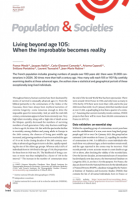
@@src2@@
Manuel de Paléodémographie
Collection : Manuels and Textes fondamentaux
2011, 432 pagesPréface de François Héran
Avant-propos
Introduction : Vous avez dit « paléodémographie » ?
PREMIÈRE PARTIE • Les données du problème
- Chapitre I • Approche épistémologique de la discipline
- Chapitre II • La donnée ostéologique
- Chapitre III • La question de la population de référence
DEUXIÈME PARTIE • La restitution des paramètres démographiques
- Chapitre IV • L'âge au décès : approches et méthodes actuelles
- Chapitre V • Les modèles démographiques actuels
- Chapitre VI • Vers des modèles adaptés aux populations préindustrielles
- Chapitre VII • Des tables-types pour les populations préindustrielles
- Chapitre VIII • Définition et exploration d'un Standard préindustriel
TROISIÈME PARTIE •Vers un protocole d'études
- Chapitre IX • Synthèse finale
- Chapitre X • Exemples d'applications archéologiques
QUATRIÈME PARTIE • Et pour aller plus loin
- Chapitre A • Critiques des méthodes actuellement utilisées - Daniel Courgeau
- Chapitre B • Une nouvelle méthode d'estimation de la structure par âges au décès des adultes - Henri Caussinus et Daniel Courgeau
Références bibliographiques
Annexes • Tableaux de données

















